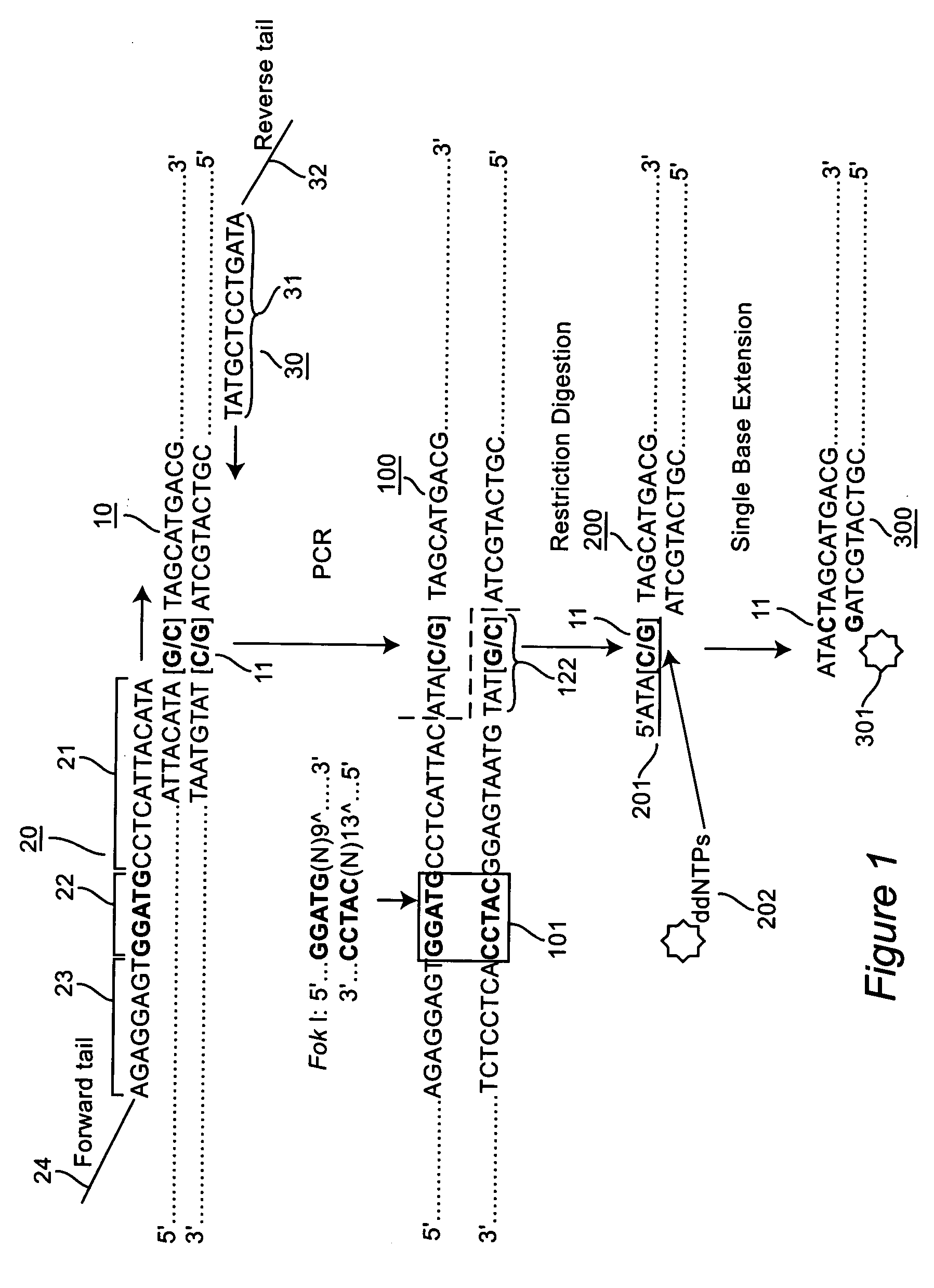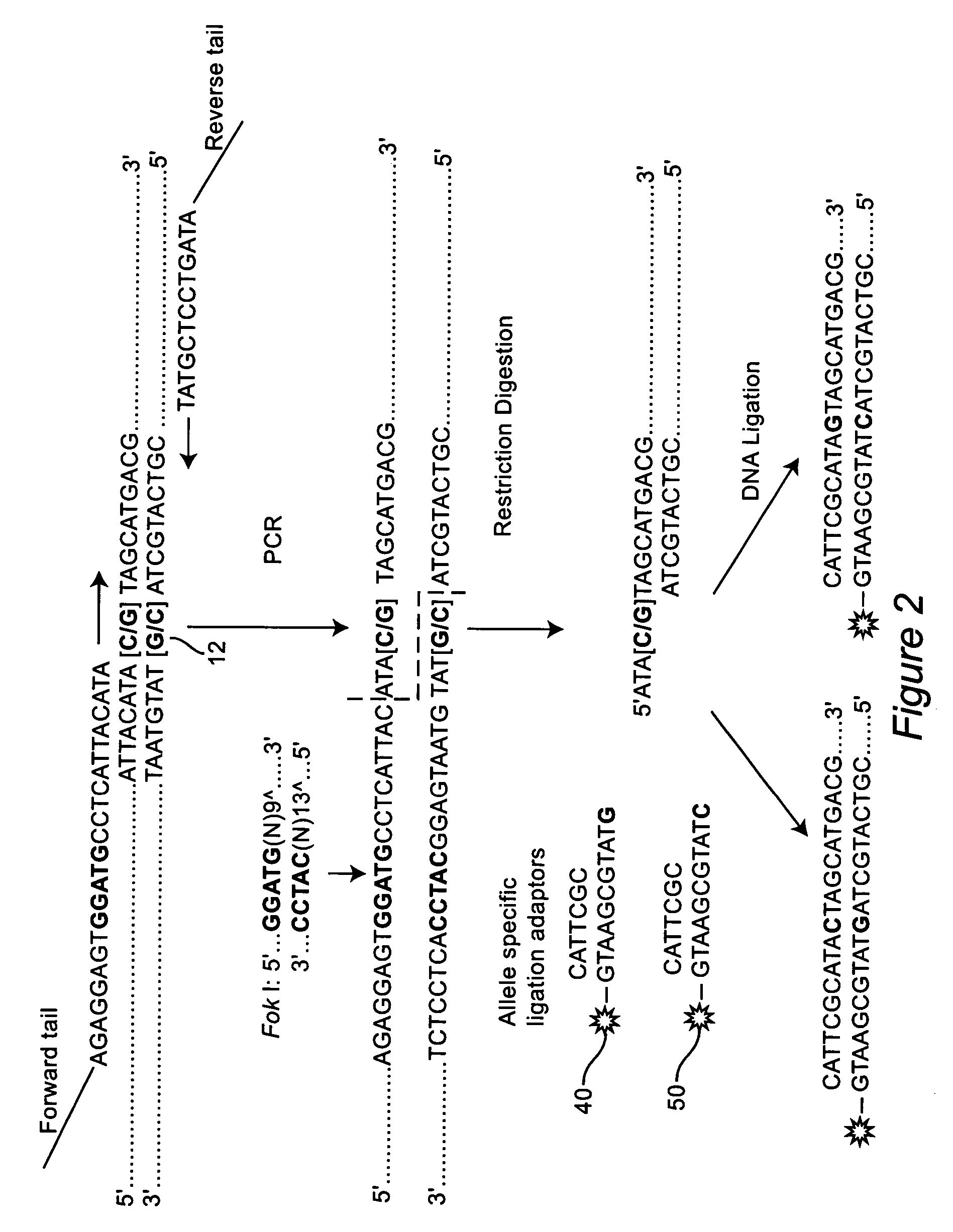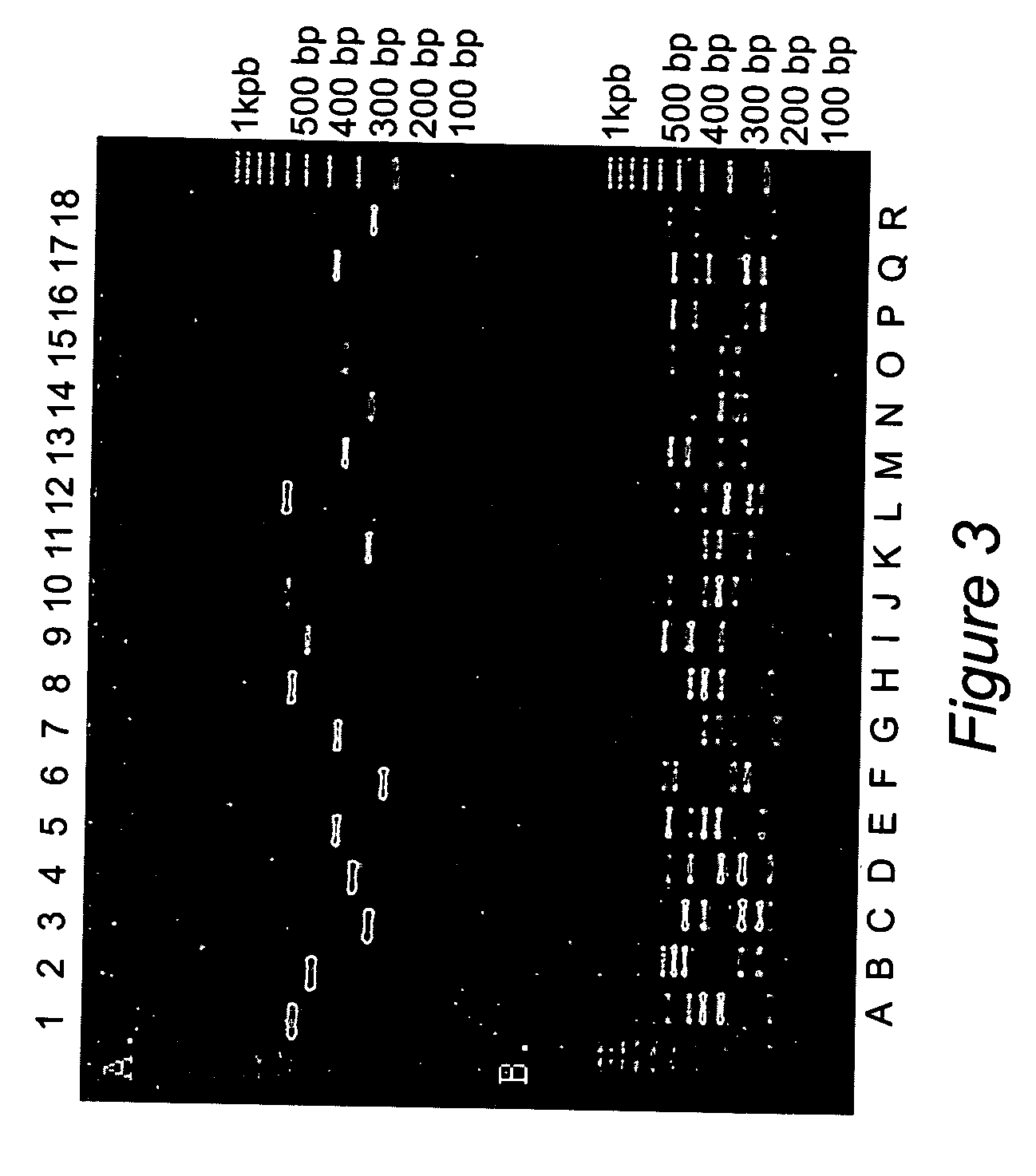Restriction enzyme mediated method of multiplex genotyping
- Summary
- Abstract
- Description
- Claims
- Application Information
AI Technical Summary
Benefits of technology
Problems solved by technology
Method used
Image
Examples
examples
Materials and Methods
DNA Samples
[0043] Human genomic DNAs were obtained from Coriell Institute (Camden, N.J.). The sample panel consisted of 44 individuals. The working concentration was 10 ng / μl.
PCR Primer Design
[0044] The forward primer was engineered to contain a type II RE recognition site at a specific position of the primer so that the restriction enzyme could cut the DNA fragment immediately upstream of the SNP site (in 5′ to 3′ direction). For example, the recognition sequence, GGATG, was placed 13 bases upstream of the targeted SNP site to generate a Fok I site, FIG. 1. Since the position of forward primer was fixed in this design, the reverse primer was positioned to produce a unique size for each SNP. When each SNP had a unique size, multiple SNPs could be stacked together for a sequencer run. Common tails (F: 5′-CGGTGCGCGTCGCTCAGG-3′ (SEQ ID NO: 1) for the forward primer, and R: 5′-TCCGATATCCCGGGTCGT-3′ (SEQ ID NO: 2) for the reverse primer) were added to the forwa...
PUM
| Property | Measurement | Unit |
|---|---|---|
| Melting point | aaaaa | aaaaa |
| Fluorescence | aaaaa | aaaaa |
Abstract
Description
Claims
Application Information
 Login to View More
Login to View More - R&D
- Intellectual Property
- Life Sciences
- Materials
- Tech Scout
- Unparalleled Data Quality
- Higher Quality Content
- 60% Fewer Hallucinations
Browse by: Latest US Patents, China's latest patents, Technical Efficacy Thesaurus, Application Domain, Technology Topic, Popular Technical Reports.
© 2025 PatSnap. All rights reserved.Legal|Privacy policy|Modern Slavery Act Transparency Statement|Sitemap|About US| Contact US: help@patsnap.com



